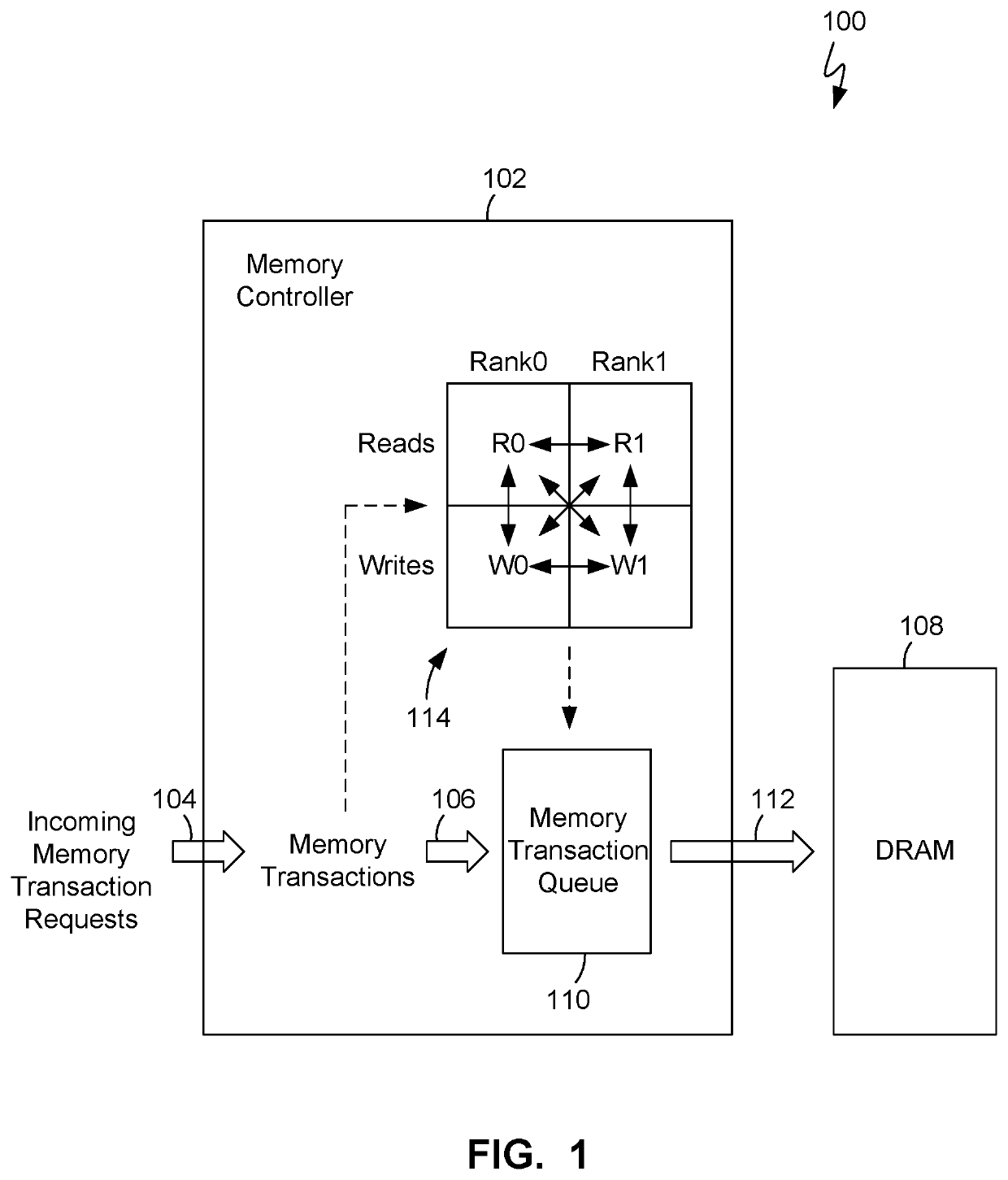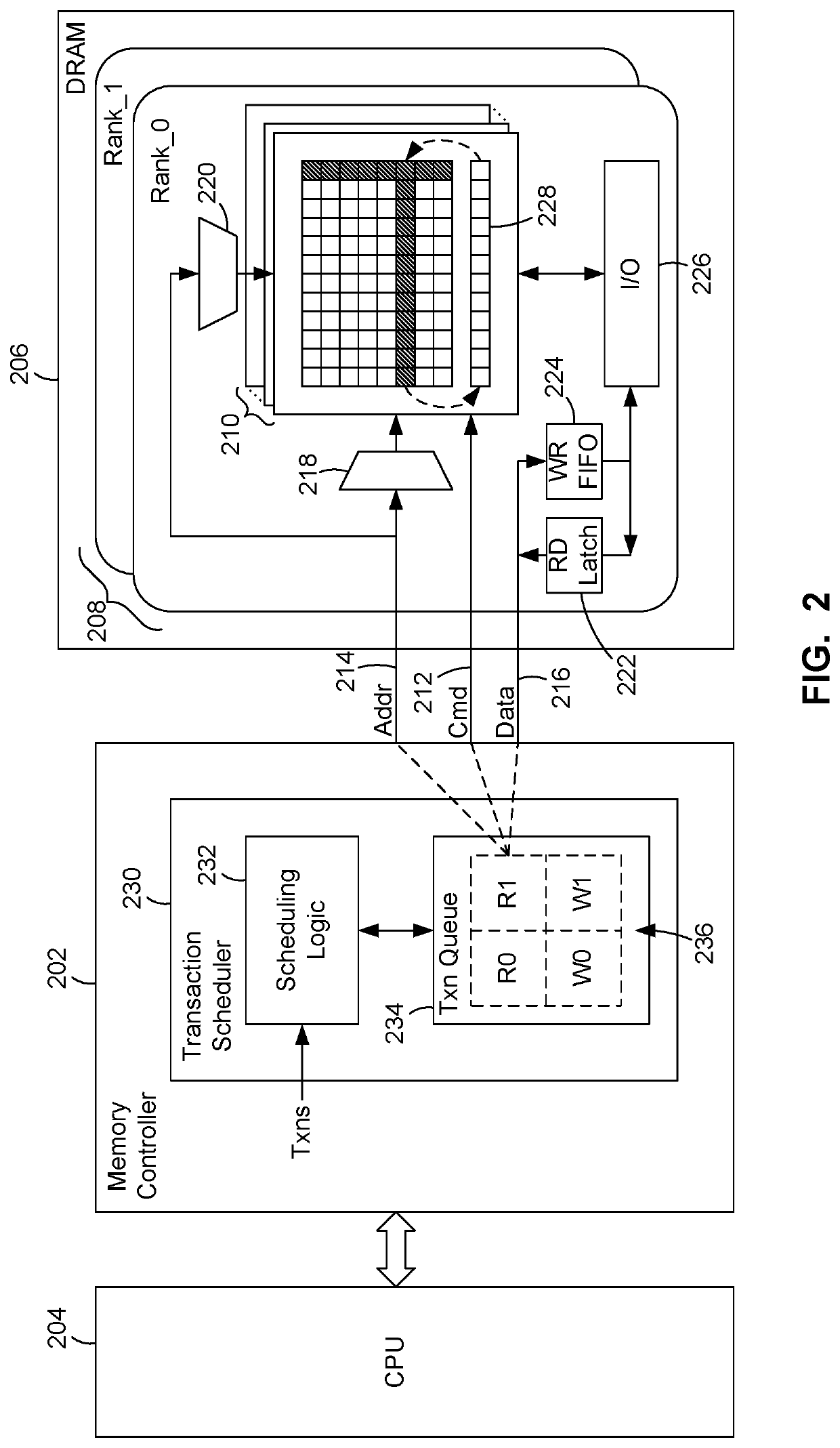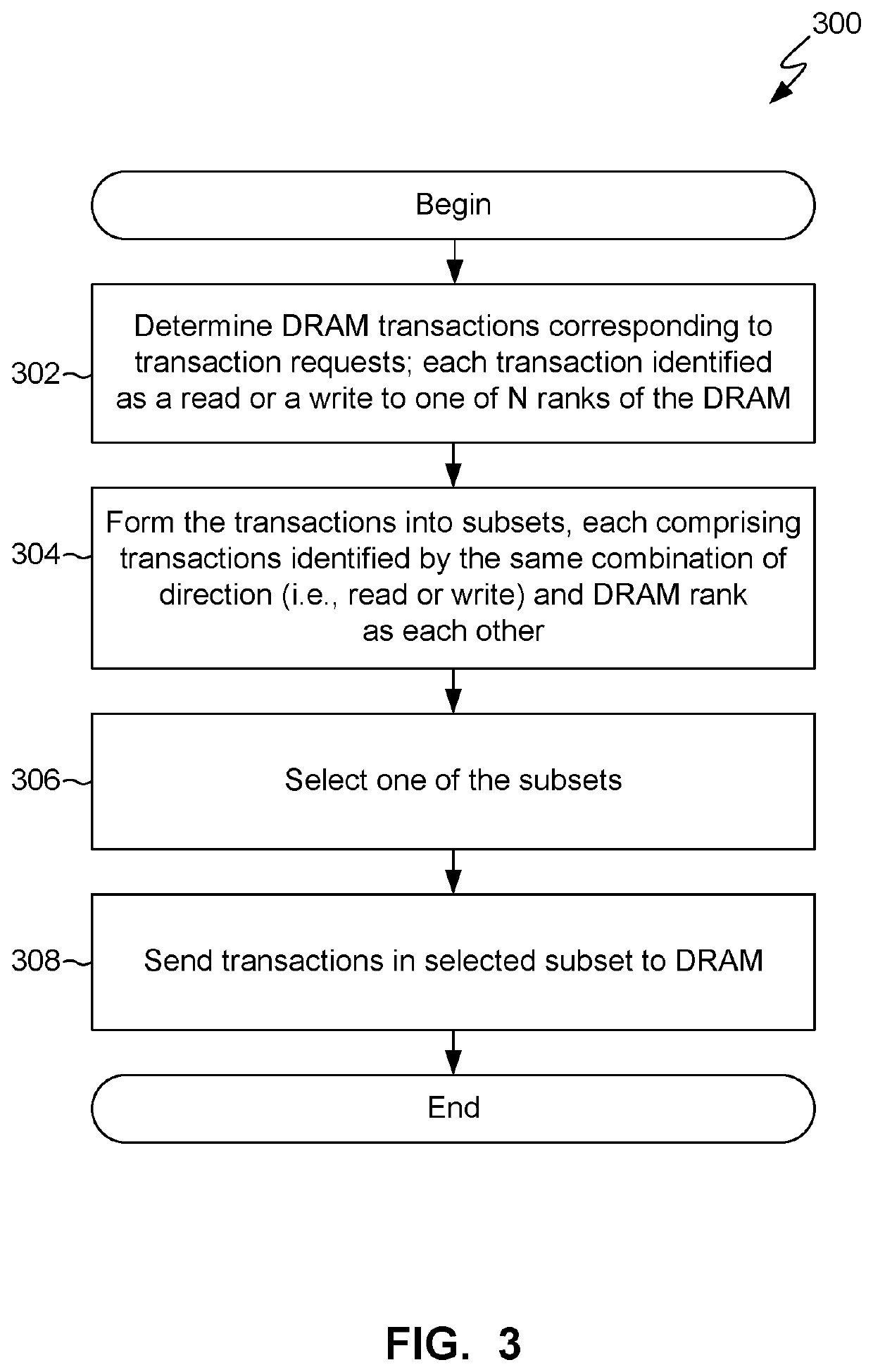Adaptive memory transaction scheduling
a memory transaction and scheduling algorithm technology, applied in the field of adaptive memory transaction scheduling, can solve the problems of adversely affecting the performance of computing devices, contributing to the latency or time required for a memory transaction to be completed, and ultimately, the user experience, and conventional memory transaction scheduling algorithms tend to be inflexible (statically defined) and do not dynamically adapt to characteristics
- Summary
- Abstract
- Description
- Claims
- Application Information
AI Technical Summary
Benefits of technology
Problems solved by technology
Method used
Image
Examples
Embodiment Construction
[0025]The word “exemplary” is used herein to mean “serving as an example, instance, or illustration.” The word “illustrative” may be used herein synonymously with “exemplary.” Any aspect described herein as “exemplary” is not necessarily to be construed as preferred or advantageous over other aspects.
[0026]As illustrated in conceptual form in FIG. 1, in a computing device 100, which may be of any type, a memory controller 102 may, among other functions, translate incoming memory transaction requests 104 from one or more processing engines (not shown) into corresponding memory transactions 106. A memory transaction request 104 may be, for example, a read request, i.e., a request to read data from a DRAM 108, or a write request, i.e., a request to write data to the DRAM 108. A transaction 106 is a set of data elements that may include one or more commands directed to the DRAM 108, data words to be written to the DRAM 108, and target addresses in the DRAM 108.
[0027]Another function of ...
PUM
 Login to View More
Login to View More Abstract
Description
Claims
Application Information
 Login to View More
Login to View More - R&D
- Intellectual Property
- Life Sciences
- Materials
- Tech Scout
- Unparalleled Data Quality
- Higher Quality Content
- 60% Fewer Hallucinations
Browse by: Latest US Patents, China's latest patents, Technical Efficacy Thesaurus, Application Domain, Technology Topic, Popular Technical Reports.
© 2025 PatSnap. All rights reserved.Legal|Privacy policy|Modern Slavery Act Transparency Statement|Sitemap|About US| Contact US: help@patsnap.com



